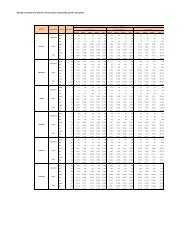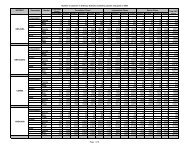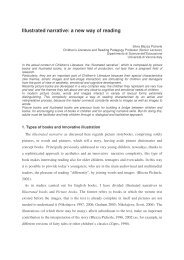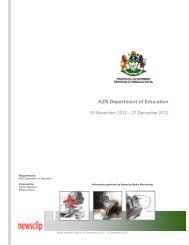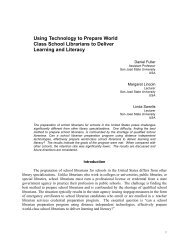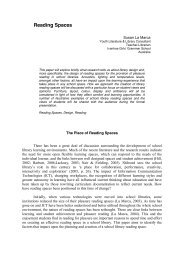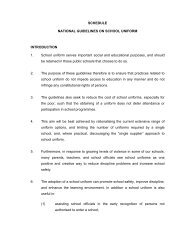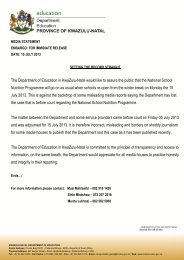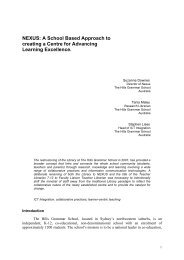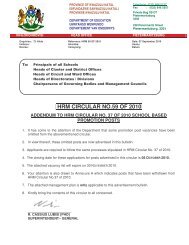GUIDELINE FOR TEACHING AND WRITING ESSAYS ... - Thutong
GUIDELINE FOR TEACHING AND WRITING ESSAYS ... - Thutong
GUIDELINE FOR TEACHING AND WRITING ESSAYS ... - Thutong
Create successful ePaper yourself
Turn your PDF publications into a flip-book with our unique Google optimized e-Paper software.
4. TRANSACTIONAL TEXTS<br />
Transactional writing texts are either a response or an initiation of a response. As implied,<br />
these are ‘transaction texts’ - a friendly letter of appreciation will possible yield a response,<br />
as much as a speech will get the audience won over or yelling in disagreement.<br />
Transactional texts are divided into Longer and Shorter texts. The kinds of texts are listed<br />
and explained below:<br />
4.1 LONGER TRANSACTIONAL TEXTS<br />
The length of texts ranges from:<br />
• 80 – 100 words for English Second Additional Language;<br />
• 120 – 150 words for English First Additional Language; and,<br />
• 180 – 200 words for English Home Language.<br />
Official/ Formal letter<br />
There are different kinds of formal letters, e.g. a letter of application, a letter to the editor of a<br />
newspaper, a letter of complaint, etc.<br />
While the letters may set different requirements for the writer, the following are applicable to<br />
all of them:<br />
• Style<br />
The formal letters must be written in direct, simple English. The writer must keep in<br />
mind that the intended audience should understand what is communicated for the<br />
results/ response to be positive.<br />
The letter should be …<br />
• Structure<br />
‣ clear and straightforward – the recipient must not be left wondering at what<br />
you are trying to communicate;<br />
‣ concise and to the point; and<br />
‣ logical.<br />
‣ All letters should have an introduction, a body and a conclusion.<br />
‣ There must be two addresses, the writer’s and the recipient’s;<br />
‣ A formal salutation – Dear Sir, Dear Mrs Bukov, etc. - follows the recipient’s<br />
address;<br />
‣ A title or subject line follows the salutation. This is a one-line summary of the<br />
letter and should be underlined;<br />
‣ The language register must be formal;<br />
‣ The conclusion must also be formal – Yours faithfully – followed by the<br />
writer’s surname and initials.<br />
• Issues to avoid<br />
‣ Slang and colloquial language;<br />
‣ Contractions, abbreviations and acronyms;<br />
‣ Unsubstantiated accusations, threats that cannot be carried out, emotional<br />
language, sarcasm, clichés, etc.<br />
9




